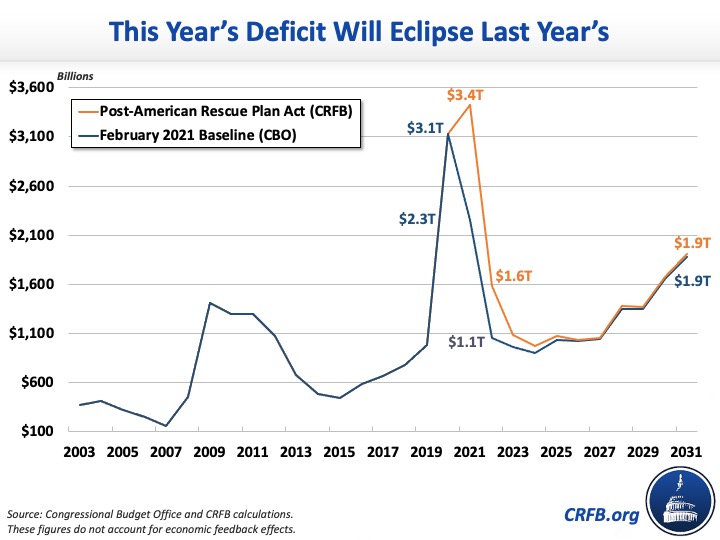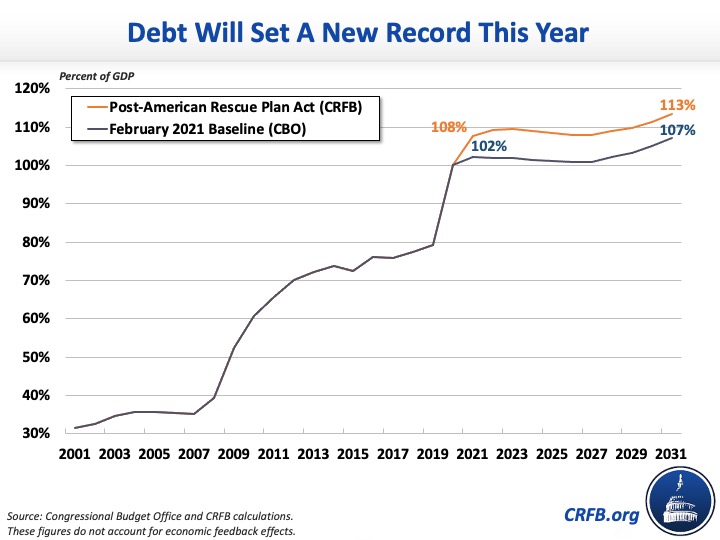New Budget Projections Show Record Deficits and Debt
Now that the American Rescue Plan Act has been signed into law, the federal deficit is on course to exceed $3 trillion this year, with debt reaching a new record as a share of the economy.
In February, under what was current law at the time, the Congressional Budget Office (CBO) projected the budget deficit would total $2.3 trillion in 2021, $1.1 trillion in 2022, and $1.9 trillion in 2031. Incorporating the direct effects of the American Rescue Plan Act, we project the deficit will now total $3.4 trillion this year – higher than last year’s record $3.1 trillion – and $1.6 trillion in 2022.
With the passage of the American Rescue Plan Act, we now project deficits will total $16.6 trillion over the 2021 to 2031 budget window, a $2.1 trillion increase over CBO's prior estimate of $14.5 trillion. Virtually all of this increase will take place between 2021 and 2026.
Measured as a share of the economy, the deficit will total 15.6 percent of GDP this year and average 4.7 percent over the coming decade. Previously, the deficit was expected to total 10.3 percent of GDP in 2021 and average 4.4 percent over the 2022-2031 period. As a share of GDP, the 2021 deficit will be the fourth highest in history, eclipsed only by three years of borrowing to fight World War II.
Importantly, these estimates do not take into account the indirect economic effects of the American Rescue Plan, which are discussed below.

With higher deficits comes higher debt. In February, CBO projected debt held by the public would total 102 percent of GDP this year, remain relatively stable through 2027, then resume an upward trajectory, ultimately reaching 107 percent of GDP by 2031. With enactment of the American Rescue Plan Act, we now estimate debt will total 108 percent of GDP this year, which will surpass the prior record of 106 percent set just after World War II. Ultimately, we project debt will rise to 113 percent of GDP by 2031.
In nominal dollars, CBO projected that debt would grow by $14.3 trillion, from $21.0 trillion at the end of 2020 to $35.3 trillion at the end of 2031. We now project debt will increase by $16.3 trillion over that same period, rising to $37.4 trillion by the end of 2031.

Importantly, these projections reflect only the direct budgetary effects of the American Rescue Plan Act and do not incorporate any potential indirect economic effects. In our assessment, the plan is likely to boost GDP, taxable income, inflation, and interest rates in the near-term relative to CBO's prior projection. On net, these effects could reduce our deficit projections by several hundred billion dollars over the next five years. Nonetheless, we expect debt to reach roughly 113 percent of GDP by 2031 irrespective of any potential economic feedback effects.


